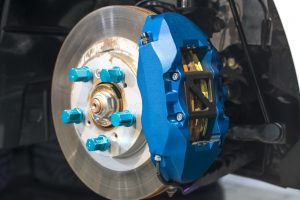 Brakes perform a vital function for the driver and need to be well maintained to work at their best. The brake caliper, brake pads, and brake rotor are the primary components of car disc brake systems. The brake pads and rotors on all cars wear out, but brake wear down is affected by several factors.Driving habits: How hard a driver pushes their brakes greatly affects how long the brake pads last. Some drivers ride the brakes and stop abruptly, while others gently coast to a stop. Smooth, gradual braking increases pad lifespan, but of course it’s important to brake abruptly when safety calls for it.
Brakes perform a vital function for the driver and need to be well maintained to work at their best. The brake caliper, brake pads, and brake rotor are the primary components of car disc brake systems. The brake pads and rotors on all cars wear out, but brake wear down is affected by several factors.Driving habits: How hard a driver pushes their brakes greatly affects how long the brake pads last. Some drivers ride the brakes and stop abruptly, while others gently coast to a stop. Smooth, gradual braking increases pad lifespan, but of course it’s important to brake abruptly when safety calls for it.
Environment:
Due to stop-and-go traffic and traffic lights, driving in the city is harder on brakes than driving out in the country or on long straight roads because braking is required less frequently. Driving in mountainous areas with steep elevation changes can wear brakes out quickly as well, because it’s often necessary to ride the brakes to control downhill speed.
Brake pad hardness:
Brake pads are available in different compounds to suit different driving needs. Hard compound brake pads last longer but usually need to be warm before they perform well, and are more common on performance cars. Soft compound brake pads perform better at low speeds, like in urban areas. Too much heat can melt pad compound onto the brake rotor and reduce brake performance if the driving gets too extreme.
Materials:
The materials that make up the brake rotor and brake pad also factor into the brakes’ durability. Carbon-ceramic brakes last longer than standard metal brakes, for instance, but they need to be warmer than the alternative to be effective. However, carbon-ceramic brakes are extremely expensive and found almost exclusively on high-performance sports cars. Steel or other metal brakes are much more common and still more than adequate to suit a variety of driving conditions.
How to tell if your brakes need replacing
- Generally, brake pads need to be replaced after about 50,000 miles. Some need to be replaced after 25,000, while others can last for 70,000 miles – it all depends on the factors listed above. To get a more accurate number for your car’s specific needs, consult the owner’s manual. There are other indicators that can communicate that the brake pads are wearing out. These include:
- Whenever the tires are rotated or the oil is changed, have the mechanic take a look at the brake pads to check the thickness. Inspect regularly.
- Brake pads have small metal hairs at the very bottom to let the driver know when they are about to run out of grippy material. Immediately replace any brake pad making a squealing or scraping noise.
- If braking becomes jittery then the rotors may be warped. Some treatments can either clean or grind down the surface of the rotor in order to make it flat again.
Generally, if the brakes look worn out or lose performance, they should be replaced. If there are any unusual noises or sparks coming from the brakes, have them inspected by your Local AMMCO Minnesota Technicians.
Come to AAMCO Minnesota for All Your Car Repairs & Maintenance
You need an experienced automotive technician who can diagnose the problem and honestly tell you what needs to be done when something is wrong with your car.
If you have questions about your car’s exhaust, engine, transmission, repair or maintenance needs, AAMCO Minnesota can help. Stop by or call a local AAMCO Minnesota repair shop for a Multi Point Vehicle Inspection of your transmission and related systems. We can handle all your scheduled car maintenance and repairs, from brakes and oil changes to factory recommended maintenance and full transmission replacements.

